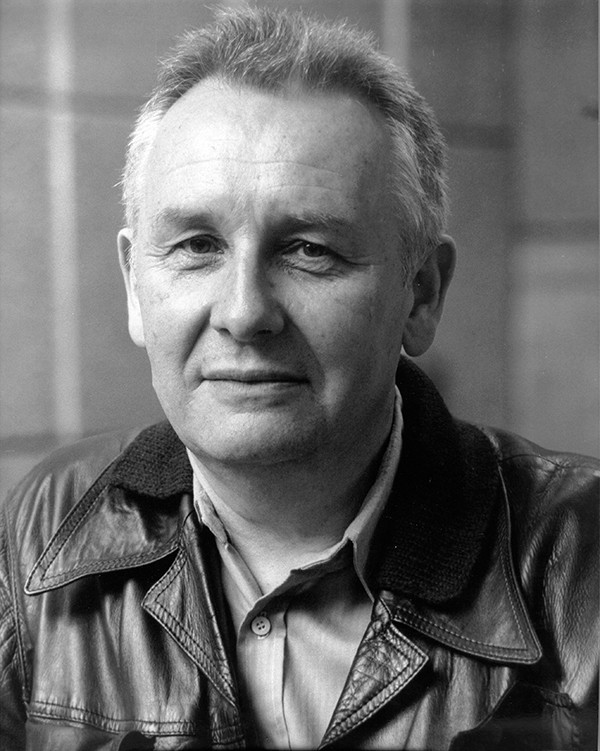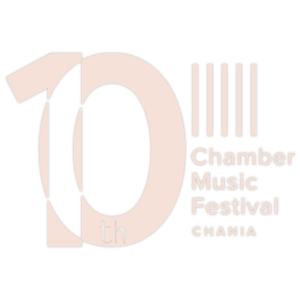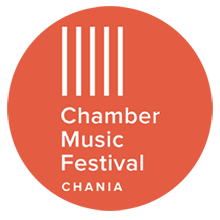
CHAMBER MUSIC FESTIVAL 2018
3rd Concert - Images
Wed 29.8
This year's third Concert is dedicated to light, that is the outward, the stimuli, the engulfing environment that challanges our perception and inspires us to recreate images in a different language. Here, chamber music works inspired by images, reveal to us the infinite expressive means that composers such as Debussy, Mussorgsky and Gorecki used to express in the most vivid and palpable way, the source of their inspiration.
Debussy's Cello sonata creates a visual landscape with the story of Pierrot and the Moon, Mussorgsky recreates in an ingenious, structurally and harmonically, work a series of sketches drawn by his recently deceased best friend, and Gorecki takes us on a dark journey of almost ritualistic character inspired by Beethoven's Moonlight Sonata.
Claude Debussy - Debussy - Cello Sonata
29'
Modest Mussorgsky - Mussorgsky - Pictures at an Exhibition
30'
Henryk Górecki - Górecki - String Quartet No.2
32'
Book your tickets
Safely book your tickets online
Light & Darkness arrow_forwardSpiritual in Music arrow_forward
Images arrow_forward
Memorial arrow_forward
Special 4-Day Pass arrow_forward
Book your tickets
- Online at ticketservices.grarrow_forward
Concert
Works
CHAMBER MUSIC FESTIVAL 2018

Claude Debussy
Cello Sonata
Debussy completed his Sonata for Cello and Piano in 1915, the first in a projected set of six chamber works. He finished only three of the intended six, completing the Sonata for Viola, Flute, and Harp the same year and the Sonata for Violin and Piano in 1917.
At one time Debussy thought to name the cello sonata "Pierrot faché avec la lune," ("Pierrot argues with the moon"), referring to the moonstruck commedia dell'arte character. The image of the serenading dreamer questioning his most trusted ally is symbolic of the disillusionment that Debussy experienced after the onset of World War I as well as with his own failing health, fighting his own battle against cancer.
Claude Debussy writes, “Try as I may, I can’t regard the sadness of my existence with caustic detachment. Sometimes my days are dark, dull, and soundless like those of a hero from Edgar Allan Poe; and my soul is as romantic as a Chopin Ballade.” Cruelly faced with his own mortality, Debussy went to work on a series of instrumental sonatas. In a letter to the conductor Bernardo Molinari from 6 October 1915 he writes, “I spend nearly a year unable to write music…after that I’ve almost had to re-learn it. It was like a rediscovery and it seemed to me more beautiful than ever! The emotional satisfaction one gets from music can’t be equaled, can it, in any of the other arts? This power of the right chord in the right place that strikes you…we are still in the age of harmonic progressions, and people who are happy just with beauty of sound are hard to find.”
MOVEMENTS
Ι. Prologue: Lent, sostenuto e molto risoluto
II. Sérénade: Modérément animé
III. Finale: Animé, léger et nerveux

Modest Mussorgsky
Pictures at an Exhibition
Mussorgsky composed Pictures at an Exhibition following the death of his friend, artist Viktor Hartmann. Hartmann was only 39 when he died in 1873 and the loss affected Mussorgsky greatly. The following year, a commemorative exhibit of Hartmann's work was held in St. Petersburg. It included paintings of scenes in Russia and abroad, pencil sketches, architectural drawings, and costume design. Mussorgsky attended the exhibit and this piece reflects that experience. By early summer 1874, he had completed the work, a lengthy and fiendishly difficult suite for solo piano. At the time of Mussorgsky’s death in 1881 from alcoholism, the piece had been neither performed nor published. It fell to his friend and colleague Nikolay Rimsky-Korsakov to tidy up the manuscript and bring it to print in 1886.
The suite consists of musical depictions of 10 paintings by Hartmann, interspersed with a recurring “Promenade” theme, or intermezzo, that represents a visitor—in this case, the composer himself—strolling through the exhibition. The powerful nature of the intermezzi, Mussorgsky acknowledged in one of his letters, reflects his own large physique. It has been suggested that the first half of the cycle acts as a mirror image of the second half. Thus, the Pictures are essentially paired by their programmatic content. The ideas and themes of fantastic characters and creatures and mysterious pieces are lined up and given a respective ‘answer’ or ‘partner’ within the second half of the cycle.
MOVEMENTS
Promenade (1st)
I. Gnomus
Promenade (2rd)
II. The Old Castle
Promenade (3rd)
III. Tuileries
IV. Bydlo
Promenade (4th)
V. Ballet of the Chicks in their Shells
VI. Samuel Goldberg and Schmuyle
Promenade (5th)
VII. The Marketplace at Limoges
VIII. Catacombs
IX. The Hut on Hen's Legs
X. The Bogatyr Gates

Henryk Górecki
String Quartet No.2 (Quasi una Fantasia)
Henryk Górecki’s intriguing string quartets, all commissions from the Kronos Quartet of San Francisco, signified a new creative phase in his music. Like any of Górecki's works, inspiration is drawn from composers of the past (particularly Beethoven), literary verse, and Polish folk music. He transforms each of these muses into works of his own unique musical language that purposefully explores dissonance, contrasting textures and rhythms, and extremes of both dynamics and tempo.
Unlike many composers, though, he did not turn to the genre of string quartet until late in his life. The stark contrasts that had been at the heart of Górecki’s compositional thinking in the 1950s and 1960s re-emerged in his chamber music of the mid 1980s and are prevalent in these works. Fans of Górecki will be familiar with the compositional devices employed such as open fifths, sustained rocking motifs, and the juxtaposition of dissonance and consonance.
With a variety of allusions to Beethoven, Quasi una fantasia (1991) unfolds over four movements – the funereal tread of its Largo making way for an often aggressive Deciso then an eloquent Arioso, before the Allegro attempts a synthesis fulfilled only by a fatalistic return to the beginning.
MOVEMENTS
I. Largo Sostenuto – Mesto
II. Deciso—Energico; Furioso, Tranquillo – Mesto
III. Arioso: Adagio Cantabile
IV. Allegro—Sempre Con Grand


